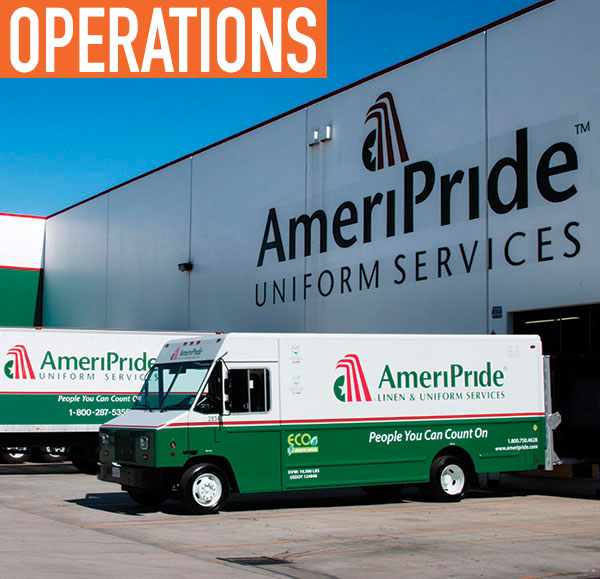Today’s low gas prices are not as great for your fleet as you might think they are. In fact, they can be more harmful to your bottom line than high prices.
A brief search of recent articles will tell you we can expect oil prices to fall below $40 a barrel before it reaches $55, stay around $50 for the rest of 2016, rise to $60 at some point in 2017, or even rise to $120 a barrel by 2018.
The simple truth is, no one really knows. Fuel price prediction has more in common with gambling than analysis. Unfortunately, this is how many truck fleets attempt to forecast their budgets and run their operations. In times of high prices, sometimes they are lucky and allocate enough funds to cover their costs. Other times, they are forced to reduce other expenditures to funnel more money into filling their tanks. In good times, when prices are low, the money saved is spent on other items, instead of holding onto those funds for when prices inevitably go up again.
REDUCE RISK
Truck fuel purchases are made based on belief of what the future will hold. When it comes to oil prices, attempting to make “educated” guesses only puts business at an unnecessary risk. This is a major industry problem where fleets previously had no alternative. Today, with the proliferation of electric trucks, fleets finally have the chance to get off the Big Oil roller coaster and onto the steady road of stable electricity rates and lower maintenance costs.
Electric trucks are driving our industry’s transition away from gas volatility. Since the cost of an electric truck’s fuel is electricity, the costs are dramatically lower and much more predictable over many years. Additionally, without a combustion engine, maintenance costs are also significantly lower than a fossil-fueled vehicle. The combination of these two factors makes going electric for daily, fixed routes a lot safer than betting on what next year’s fuel prices might be.
This predictability prompted the leading textile rental services and supply company in North America to convert 20 percent of its Vernon, California, fleet to Morgan Olson all-electric walk-in vans powered by Motiv Power Systems all-electric powertrains. AmeriPride chose the Los Angeles area for these electric trucks based on route density and infrastructure, financial incentives, and the region’s poor air quality.
“We are extremely excited about the new electric delivery trucks at our facility,” says Annette Casemero, general manager for AmeriPride’s Vernon branch. “Our first truck has been running daily routes since it was delivered in November. Adding electric vehicles to our fleet complements our expanding alternative fuel program and we look forward to adding additional electric vehicles to our fleet in the coming year.”
The company’s new delivery vehicles feature up to 80 miles of range and a 50 percent battery charge time of 2.5 hours.

Featured Image: AmeriPride chose the Los Angeles area for its electric trucks based on route density and infrastructure, financial incentives, and the region’s poor air quality.
Above: Today, with the proliferation of electric trucks, fleets finally have the chance to get off the Big Oil roller coaster.
SAVINGS OF GOING ELECTRIC
When considering the cost of ownership for a diesel truck, the cost for fuel and maintenance is expected to be about six to eight times that of an electric vehicle. As an example, a general daily delivery truck (Class 4) offers six to eight miles to the gallon, equating to about 60 to 80 cents a mile, depending upon the cost of diesel.
Research suggests all-electric powertrains, such as those from Motiv, can cut operating costs by 50 percent over an eight-year period. With a medium-duty pilot shuttle, Motiv reduced operating costs from 80 cents per mile to 10 cents per mile.
GOOD FOR THE COMMUNITY
When going electric, in addition to having zero tailpipe emissions, fleets also reduce the health risks for drivers and the surrounding community. Emissions from diesel particulate matter from heavy-duty vehicles is estimated to be responsible for 70 percent of total known cancer risks related to air toxins in California. The production, refining, and use of petroleum are responsible for almost half of California’s greenhouse gas emissions and 80 percent of smog-forming pollution.
Furthermore, paying for electricity instead of fuel at the pump supports the local economy. In an assessment of EVs, it was found that dollars saved at the gas pump and spent on other goods and services creates 16 times more jobs than a dollar spent on refined petroleum product. This money circulating in the local economy is a benefit that helps all local businesses, including the fleet making the investment.
As many companies evaluate what it means to be a good corporate citizen and their own social responsibility when doing businesses, the negative impacts of their fleet and potential for positive impacts upon adoption of zero-emission solutions should be considered.
PREPARED FOR THE FUTURE
When going electric with companies like Motiv, fleets are not bound to specific ranges. With the company’s scalable all-electric powertrains, they can specify a battery range when the truck is built and add batteries after the truck is in use to increase the range, without the need for a complete system redesign. Old batteries can also be swapped out for new ones. It’s even possible to add two different battery chemistries to a truck, for a more refined output of power to the wheels.
Considering the higher upfront costs for electric trucks, it is easy to see how making the switch from fossil fuels can be a challenge. This can be especially true in a time of low oil prices when a shortsighted ROI analysis makes it look unfavorable to make the transition.
But, when the budgets have extra funds from low fuel prices, these funds could and should be saved for future use; not for the rainy days of high oil prices, but for the transition to all-electric vehicles, where electricity rates and maintenance costs are steady and predictable. High capital costs are often cited as the barrier to electric truck adoption, when in fact these vehicles are proving in the long run to be less costly than their fossil-fueled counterparts. This proven and reliable technology holds the potential to reduce the overall costs and risks of managing a fleet of vehicles.
You wouldn’t gamble on your company’s capital expenditures, so why do it with gas prices?
ABOUT THE AUTHOR:
Jim Castelaz is the founder and CEO of Motiv Power Systems, the leader in all-electric powertrains for trucks and buses. Motiv partners with existing truck builders who manufacture electric versions of their traditional fossil-fueled vehicles on their current assembly lines using the Motiv All-Electric Powertrain. Common vehicle types from these builders include work, delivery, and refuse trucks, as well as school and shuttle buses.
_______________________________________________________________________
MODERN WORKTRUCK SOLUTIONS: AUGUST 2016 ISSUE
Did you enjoy this article?
Subscribe to the FREE Digital Edition of Modern WorkTruck Solutions magazine.
![]()




